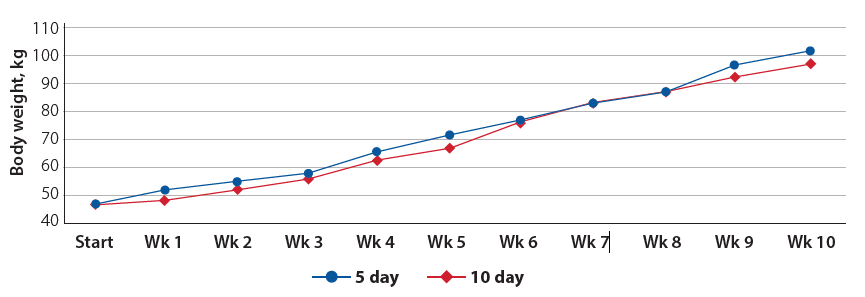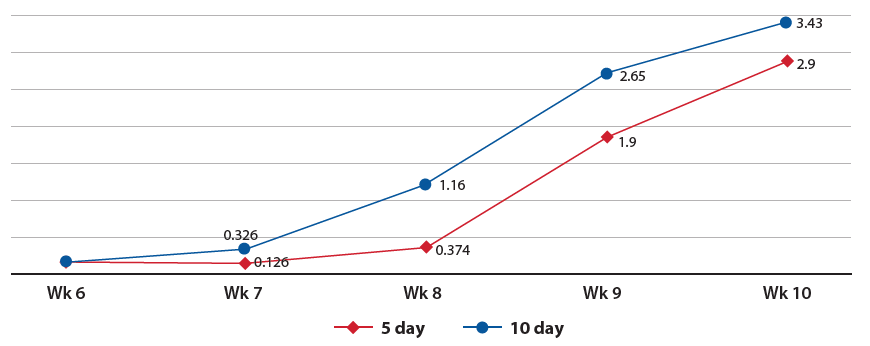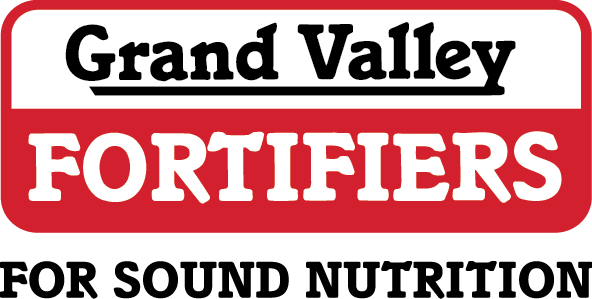Ruminant Nutrition Manager
Grand Valley Fortifiers
Weaning should be a process that is standardized but also adjustable toward the size of the calf. A smaller, poorer doing calf should stay behind so they don’t survive long enough to fail in the next stage of their growth. The approach to weaning should be slow and consistent. A lot of things can be less than perfect in calf rearing but it better be consistent for optimal growth and health of the calf!
The goal of weaning is to ensure a smooth transition from that pre-ruminant stage to the ruminant stage where other feeds can be introduced, and a rumen microbial environment is being established. The advantage of a smooth transition leads to decreased morbidity and mortality and increases gain (Khan et al, 2012). Where it tends to slow a calf down is the abrupt weaning stage where feed and/or housing and/or pen mates are changed and with each change the calf shifts their nutrition from growth to maintenance and stress mitigation.
Feeding is a learned behaviour
When animals are young, they learn what is expected from them – if they are with the dam, as in the case of many beef calves, they will nurse but they will also need to learn where to find water, and what creep feed is and/or where does the dam eat. In the case of calves, fed away from the dam, they learn what to eat/drink from and they will learn when to expect it. When it comes to weaning this process is a retraining. Now they need to adjust to what they are eating. Given the time, they will learn, move forward, and continue growing. If calves are in a competitive environment where they do have to fight for feed this is the behaviour that will remain with them through all stages of their production. We refer to that fight for feed as “slug feeding” where they attack the feed quickly. This leads to persistent digestive issues and poor feed efficiency – a cost not often realized because the opportunity to do better comes from giving animals more space and potentially more feed. Improvements in feed efficiency can make a big difference in terms of the $/animal and for beef the time to finish can be reduced.
Step down weaning
This is a gradual reduction of access to milk (or the dam) to initiate the calf’s reflex to eat more grain and some forage if offered. A trial using bull calves and feeding them milk replacer for a total of 60 days was initiated whereby the calves were housed individually and the milk program was the same for all calves (offering up to 9 L per day at 150g of milk replacer powder/L of water). The only difference was some calves were weaned over 5 days and some were weaned over 10 days. Figure 1 shows the differences while on milk and then at week 8 they were all weaned and you can see the calves pulled ahead very quickly when they were given 10 days to wean (no calves were moved at this time).

Figure 1: Calves bodyweight throughout milk fed phase (start to 8 weeks) and post weaning phase; weaning took place the last 10 or 5 days from the 8 week mark.

Figure 2: Grain intake throughout weaning and post weaning (all numbers on the graph are average
kg eaten/day/calf). Post wean all calves had ad libitum access to grain and water.

Figure 3: Health events/calf throughout weaning and post weaning for calves weaned over a 5 and 10 day period.
While this data applies to calves housed away from the dam, those calves that remain with the dam will show the same signs of stress if abruptly removed and weaned. Considering an approach where calves are separated for short periods of time and can still see the dams is ideal. Calves should have access to their own feed and water and the area should enable safely running around (play). This will improve average daily gains by introducing them to change slowly and consistently.
Take home message
Small changes are best with as much consistency as possible:
- Slow reduction of milk or short separation times from the dam
- Access to the same feeds they have been eating.
- Keeping them with the same calves or in the same pen/hutch while weaning
This article was written for the Winter 2024 Beef Grist. To read the whole Beef Grist, click the button below.

